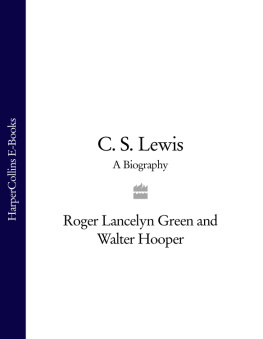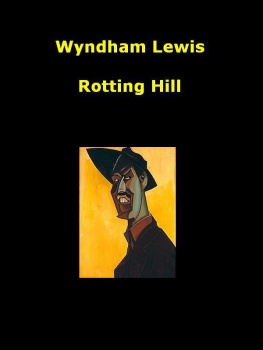
Copyright Paul OKeeffe 2015
All rights reserved under International and Pan-American Copyright Conventions.
No part of this book may be used or reproduced in any manner whatsoever without written permission from the publisher, except in the case of brief quotations embodied in critical articles and reviews.
Library of Congress Cataloging-in-Publication Data is available
Cover image National Portrait Gallery
COUNTERPOINT
2560 Ninth Street, Suite 318
Berkeley, CA 94710
www.counterpointpress.com
Distributed by Publishers Group West
10 9 8 7 6 5 4 3 2 1
e-book ISBN 978-1-61902-642-1

CONTENTS



The typography of this page, along with every other external surface of the world, impresses itself upon the brain through a threefold relay of neurones: rods and cones, ganglion cells and optic nerve fibres.
Light, projecting images of objects in the temporal or outer fields of vision, strikes the retinal surfaces closest to the nose. Fibres conduct these images along the right and left optic nerves, into the cranial cavity and through the dura mater, until they cross at the optic chiasma. Fibres from the left nasal retina then pass along the right optic tract, those from the right passing along the left, to the primary visual centres at the base of the brain, and from there to the occipital lobes at the rear. Images of objects positioned between the temporal, in what are known as the nasal, fields are registered by the outer retinae and communicated more directly: bypassing the junction at the centre of the optic chiasma, fibres from the right eye run along the right optic nerve and tract, those from the left eye along the left optic nerve and tract. The central field, represented by the macular region at the centre of the retina, splits down the middle in each eye, half belonging to the temporal and half to the nasal field. The bundle of fibres from the macular region of each retina run along the optic nerves to the optic chiasma. There the bundles divide. Half the fibres from each eye pass along the right tract, half along the left.
Extensive damage to one of the optic nerves will destroy the sight in the eye to which it belongs. Similar damage to one of the optic tracts will cause a loss of the nasal field in one eye and of the temporal field in the other. Damage to the optic chiasma will eliminate the temporal vision of both eyes.
Below the chiasma, embedded in bone, lies the pituitary gland. About a centimetre across, it occupies a small depression in the base of the skull, protected by bony ridges front and back. The appearance of this depression suggests its name: the sella turcica or Turkish saddle. In its healthy state the pituitary gland is not connected with the mechanism of sight.
The Pathology Museum on the ground floor and mezzanine of Westminster Medical School in Horseferry Road was dismantled in 1986, when government rationalisation of the Health Service merged it with As they awaited transfer to other premises, the cluttered ranks of old, disease-tattered human organs formed grotesque collages in corridors, offices and storerooms. Amongst this grisly, formalin-preserved lumber, the dexter half of a mans brain lay sealed in its perspex container, the label barely legible: FA 1008. It was occasionally retrieved from the chaotic limbo of exhibits for the edification of medical students learning about cerebral tumours.
The longitudinal cross-section of FA 1008 shows a pituitary gland swollen to a solid ovoid mass, six centimetres in height and four centimetres from front to back and from side to side; it is the size of a moderately developed hens egg. The bottom of this morbid excrescence was some two centimetres lower than the original site of the gland, because, in its inexorable growth, it had burst apart the ridges of the sella turcica and forced the bone itself downwards. Its bulbous upper extremity, meanwhile, pushed on into the floor of the midbrain, compressing the third ventricle and flattening the optic chiasma to the thinness of paper. The tumour was pink in section and stippled with blood vessels. Because of its age and slow growth, parts of the outer surface had calcified like eggshell.
Sight began to fail in 1937 as the tumescent gland encroached on the chiasma causing a gradual loss of vision, starting with the temporal field, in the left eye. By 1946 the temporal field of the right eye had also become affected as the tumour expanded further to atrophy the optic fibres at this sensory junction box. By 1950, vision in the left eye had been practically obliterated and only a small window in the lower central field stayed open. The pupil was almost fixed in direct light. With the destruction of the chiasma nearly complete, only the central field of the right eye remained and even this limited vista had the grainy texture of a mist, creeping across the mouth of a tunnel, as the right optic tract was also invaded. The blue-grey mist was not of uniform density and a movement of the head could bring small details into focus: a friends waistcoat, a nose, a bald scalp. But such splinters of perception gradually dulled as the thickening mist became less and less distinguishable from the outer darkness. However, darkness never entirely overwhelmed the narrow island of sight and in this sensory twilight visitors could still be discerned as shadows and a sunlit window as a blurred rectangular patch of slightly lighter grey.
Blindness, although the most devastating, was not the only effect of the tumour. The pituitary gland controls the hormonal balance of the body. An adult male victim of pituitary disorder might suffer in one of two ways: overactivity or hyperpituitarism produces Acromegaly: an ape-like coarsening of the features, abundance of hair and enlargement of bones in hands and feet; underactivity or hypopituitarism, Feminism: poor beard, thinning or absence of pubic, armpit and chest hair, smooth skin and loss of sexual function. The man whose last organic remnant is preserved as FA 1008 was afflicted by the latter condition. Four years before he died a female acquaintance noted his queer white skin, unlined face and hands... Like an old frog.
The tumour blinded and emasculated, but did not kill him. Autopsy revealed an enlarged heart, while microscopic examination of a section of kidney showed grossly distended arteries. Hypertension, or chronic high blood-pressure, had caused renal failure and the level of urea in the blood accordingly rose to ten times the norm. The result was uraemic coma. Bronchopneumonia finally engorged the lungs with pus. Doctors call this the old mans friend.
Death in the subdistrict of Westminster South was registered on the eighth of March 1957 by the deceaseds widow: died seventh of March, Westminster Hospital, Percy Wyndham Lewis, Male, 72 years, of Studio A, 29 Notting Hill Gate, Kensington, Artist and Author.
The Horseferry Road building was demolished in the late 1990s and today the Pathology Museum is housed in Hammersmith.

Next page





